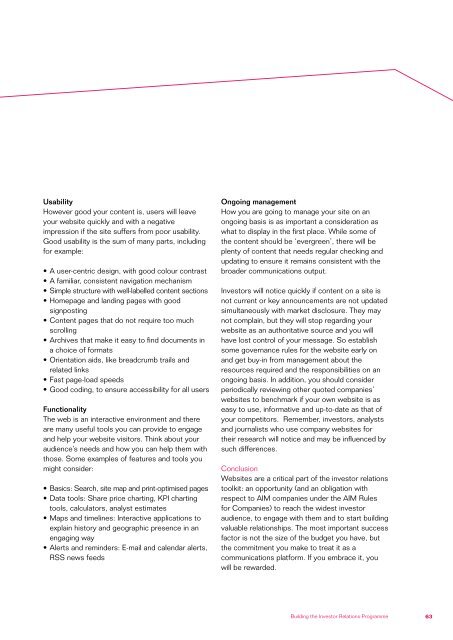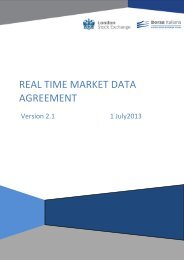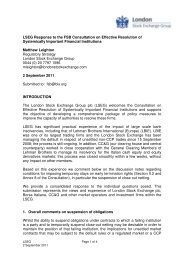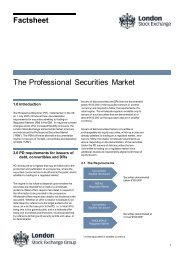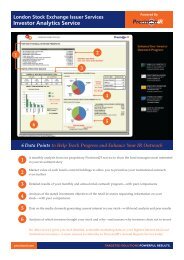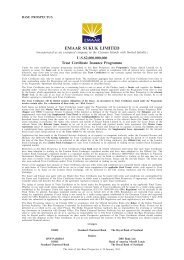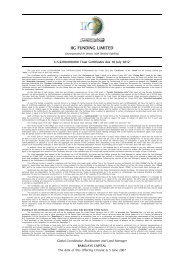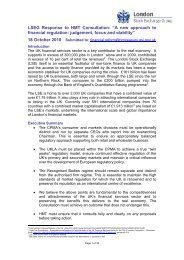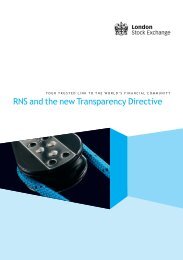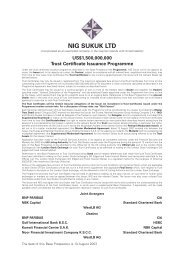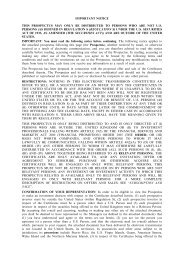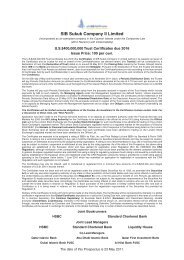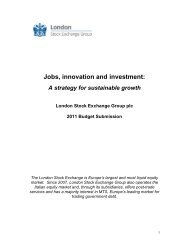Investor Relations - A Practical Guide - Investis
Investor Relations - A Practical Guide - Investis
Investor Relations - A Practical Guide - Investis
Create successful ePaper yourself
Turn your PDF publications into a flip-book with our unique Google optimized e-Paper software.
Usability<br />
However good your content is, users will leave<br />
your website quickly and with a negative<br />
impression if the site suffers from poor usability.<br />
Good usability is the sum of many parts, including<br />
for example:<br />
• A user-centric design, with good colour contrast<br />
• A familiar, consistent navigation mechanism<br />
• Simple structure with well-labelled content sections<br />
• Homepage and landing pages with good<br />
signposting<br />
• Content pages that do not require too much<br />
scrolling<br />
• Archives that make it easy to find documents in<br />
a choice of formats<br />
• Orientation aids, like breadcrumb trails and<br />
related links<br />
• Fast page-load speeds<br />
• Good coding, to ensure accessibility for all users<br />
Functionality<br />
The web is an interactive environment and there<br />
are many useful tools you can provide to engage<br />
and help your website visitors. Think about your<br />
audience’s needs and how you can help them with<br />
those. Some examples of features and tools you<br />
might consider:<br />
• Basics: Search, site map and print-optimised pages<br />
• Data tools: Share price charting, KPI charting<br />
tools, calculators, analyst estimates<br />
• Maps and timelines: Interactive applications to<br />
explain history and geographic presence in an<br />
engaging way<br />
• Alerts and reminders: E-mail and calendar alerts,<br />
RSS news feeds<br />
Ongoing management<br />
How you are going to manage your site on an<br />
ongoing basis is as important a consideration as<br />
what to display in the first place. While some of<br />
the content should be ‘evergreen’, there will be<br />
plenty of content that needs regular checking and<br />
updating to ensure it remains consistent with the<br />
broader communications output.<br />
<strong>Investor</strong>s will notice quickly if content on a site is<br />
not current or key announcements are not updated<br />
simultaneously with market disclosure. They may<br />
not complain, but they will stop regarding your<br />
website as an authoritative source and you will<br />
have lost control of your message. So establish<br />
some governance rules for the website early on<br />
and get buy-in from management about the<br />
resources required and the responsibilities on an<br />
ongoing basis. In addition, you should consider<br />
periodically reviewing other quoted companies’<br />
websites to benchmark if your own website is as<br />
easy to use, informative and up-to-date as that of<br />
your competitors. Remember, investors, analysts<br />
and journalists who use company websites for<br />
their research will notice and may be influenced by<br />
such differences.<br />
Conclusion<br />
Websites are a critical part of the investor relations<br />
toolkit: an opportunity (and an obligation with<br />
respect to AIM companies under the AIM Rules<br />
for Companies) to reach the widest investor<br />
audience, to engage with them and to start building<br />
valuable relationships. The most important success<br />
factor is not the size of the budget you have, but<br />
the commitment you make to treat it as a<br />
communications platform. If you embrace it, you<br />
will be rewarded.<br />
Building the <strong>Investor</strong> <strong>Relations</strong> Programme 63


